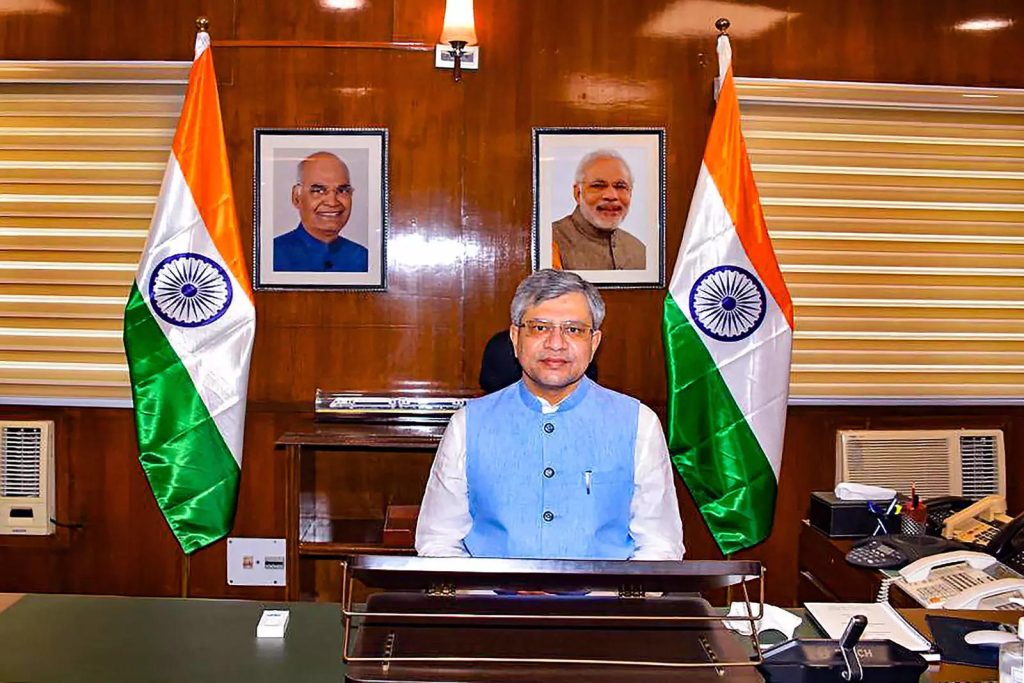
india-to-get-9-more-supercomputers-under-digital-india-programme
The Union Cabinet chaired by Prime Minister Narendra Modi on Wednesday approved the expansion of the Digital India programme with an outlay of ₹14,903 crore.
Union electronics and information technology (IT) minister Ashwini Vaishnaw said that it will boost the digital economy of India, drive digital access to services and support the country’s IT and electronics ecosystem.
“6.25 lakh IT professionals will be re-skilled and up-skilled under the FutureSkills Prime Programme. 2.65 lakh persons will be trained in information security under the Information Security & Education Awareness Phase (ISEA) Programme. 540 additional services will be available under the Unified Mobile Application for New-age Governance (UMANG) app/ platform. At present over 1,700 services are already available on UMANG; 9 more supercomputers will be added under the National Super Computer Mission. This is in addition to 18 supercomputers already deployed,” Vaishnaw said at a press briefing after the Union Cabinet meeting.
The Union Cabinet on Wednesday approved an outlay of ₹ 14,903 crore for the extension of the Digital India programme. Addressing a press briefing, Union minister Ashwini Vaishnaw said the money will be spent over five years – from 2022 to 2026. The extended Digital India programme will add on to the work done under the previous version of the scheme. One of the highlights of the extension is the creation of nine new supercomputers, which will be in addition to 18 supercomputers already deployed.
Digital India Scheme
The programme was launched by the Centre in 2015 with an aim to increase the internet connectivity and make the country digitally empowered.
In March 2015, the government had approved installation of 70 supercomputers under National Supercomputing Mission (NCM) with an outlay of ₹ 4,500 crore.
What are supercomputers?
These are machines that can perform incredibly complex calculations within seconds. To put things in perspective, a modern laptop or desktop can perform around 3 billion calculations per second. While this sounds incredibly fast, it is still far beneath the processing power of the supercomputers, which can perform quadrillions of calculations per second.
Top supercomputers in India under digital India scheme
India has made rapid progress in the last few decades in the development of supercomputers that are used to process big data and offer result quickly.
AIRAWAT: It has been ranked 75th in the Top 500 Global supercomputing list. The rankings were announced at the 61st edition of the International Supercomputing Conference (ISC 2023) held in Germany.
It has a remarkable speed of 13,170 teraflops (Rpeak). It was installed at the Centre for Development of Advanced Computing (C-DAC) in Pune. AIRAWAT works on the operating system Ubuntu 20.04.2 LTS.
PARAM Siddhi-AI computer: It has been ranked 131st in the global list. This too has been installed at C-DAC. The agency said that combined with AIRAWAT, the machine gives a total peak compute of 410 AI Petaflops Mixed Precision and sustained compute capacity of 8.5 Petaflops (Rmax) Double Precision. The peak compute capacity (Double Precision, Rpeak) is 13 Petaflops.
Pratyush supercomputer: The machine secured the 169th position and has been installed at the Indian Institute of Tropical Meteorology.
Mihir: This supercomputer has been ranked 316th on the list. It is a Cray XC40 machine powered by Xeon E5-2695v4 18C 2.1GHz, Aries interconnect and HPE. The supercomputer is installed at the National Centre for Medium Range Weather Forecasting.



